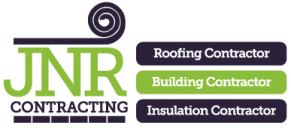Structural dampness in new constructions is a pervasive issue that can lead to significant long-term damage if not adequately addressed. This problem, which involves the presence of unwanted moisture within the structure of a building, can compromise the integrity of the construction materials and lead to health problems for occupants due to mould and mildew growth.
Understanding the importance of preventive measures from the outset of a building project is crucial. Early intervention and strategic planning can mitigate the risks associated with structural dampness, ensuring the longevity and safety of the construction.
The significance of tackling dampness in new constructions cannot be overstated. Moisture ingress can degrade building materials, leading to structural weaknesses and a decrease in property value. Moreover, the health implications for inhabitants, including respiratory issues and allergies, highlight the need for a proactive approach to moisture control.
Developers and builders can safeguard against the potential financial and health-related repercussions of structural dampness by implementing preventive strategies during the construction phase, setting a foundation for durable and healthy living spaces.
Understanding Structural Dampness
Structural dampness arises when excess moisture becomes trapped within the building’s fabric, which can stem from various sources. The primary culprits include rising dampness, penetrating dampness, and condensation, each with distinct causes and manifestations.
Rising dampness occurs when groundwater moves up through the walls due to capillary action, while penetrating dampness is the result of water infiltrating the building from the outside, often through faulty roofing or plumbing. Condensation, on the other hand, is caused by high levels of humidity inside the building, leading to water vapour condensing on colder surfaces.
Recognising the early signs of these dampness types is paramount for effective prevention and treatment. Symptoms such as peeling paint, musty odours, and visible mould growth indicate the presence of moisture that needs to be addressed.
Understanding the underlying causes of dampness enables construction professionals to implement targeted measures that prevent moisture ingress.
This knowledge is essential for creating buildings that are not only structurally sound but also healthy environments for occupants.
Factors Contributing to Structural Dampness in New Constructions
The battle against structural dampness begins with recognising the factors that contribute to its emergence. Poor construction practices, such as inadequate waterproofing and the use of subpar materials, can leave a building vulnerable to moisture penetration.
Failure to properly address site drainage issues can also lead to water accumulation around the foundation, exacerbating the risk of dampness. Environmental and climatic conditions also play a significant role, with areas prone to heavy rainfall or high humidity levels facing greater challenges in keeping moisture at bay.
Addressing these contributing factors requires a comprehensive approach that encompasses proper site selection, design considerations, and the selection of appropriate construction materials and techniques.
Effective site drainage systems, waterproof barriers, and moisture-resistant materials are essential to a damp-proof construction strategy. By prioritising these elements from the planning stage, builders can significantly reduce the risk of dampness-related issues, ensuring the structural integrity and habitability of new constructions.
Preventive Strategies and Solutions
Implementing preventive measures against structural dampness is crucial for the durability and safety of new constructions. This entails a thorough site analysis to identify potential moisture sources and the incorporation of damp-proofing and waterproofing solutions in the building design.
Materials such as damp-proof membranes and water-resistant coatings can provide effective barriers against moisture ingress. Additionally, construction techniques that enhance drainage and prevent water accumulation play a vital role in dampness prevention.
Innovative building technologies offer additional avenues for combating structural dampness. Advances in materials science have led to the development of hydrophobic coatings and moisture-managing building wraps, which can further safeguard buildings from water damage.
Incorporating these technologies during the construction phase not only enhances the building’s resistance to dampness but also contributes to its overall energy efficiency and environmental sustainability.
Such proactive measures are indispensable for ensuring the long-term success of new construction projects.
Maintenance and Monitoring
Ongoing maintenance and monitoring are essential for the long-term management of structural dampness. Regular inspections can identify potential problem areas before they escalate into major issues, allowing for timely interventions.
This includes checking for leaks, ensuring that drainage systems are functioning correctly, and monitoring humidity levels within the building. Maintenance routines should also focus on the exterior of the building, including the roof, gutters, and foundation, to prevent water ingress.
Educating property owners and occupants about the signs of dampness and the importance of proper ventilation and humidity control can further mitigate the risk of moisture-related problems.
By fostering a proactive approach to building maintenance, stakeholders can extend the lifespan of their properties, preserve their structural integrity, and provide a healthier living environment. This ongoing vigilance is key to preventing the recurrence of dampness and maintaining the value and habitability of new constructions.
Conclusion
Preventive measures for structural dampness in new constructions are not just a matter of building integrity; they are crucial for ensuring the health and safety of occupants.
By understanding the causes and implementing strategic solutions from the outset, builders and developers can avoid the costly and detrimental effects of moisture.
Strategic planning, innovative materials, and regular maintenance are key to this endeavour, ensuring new constructions are not only structurally sound but also healthy and sustainable.
Recognising the various factors that contribute to dampness—ranging from construction practices to environmental conditions—allows for a targeted approach to prevention.
By embracing modern technologies and materials designed to repel moisture, alongside diligent maintenance routines, the construction industry can effectively combat the challenges posed by structural dampness.
Ultimately, the goal is to create buildings that stand the test of time, providing safe and comfortable environments for all occupants.
